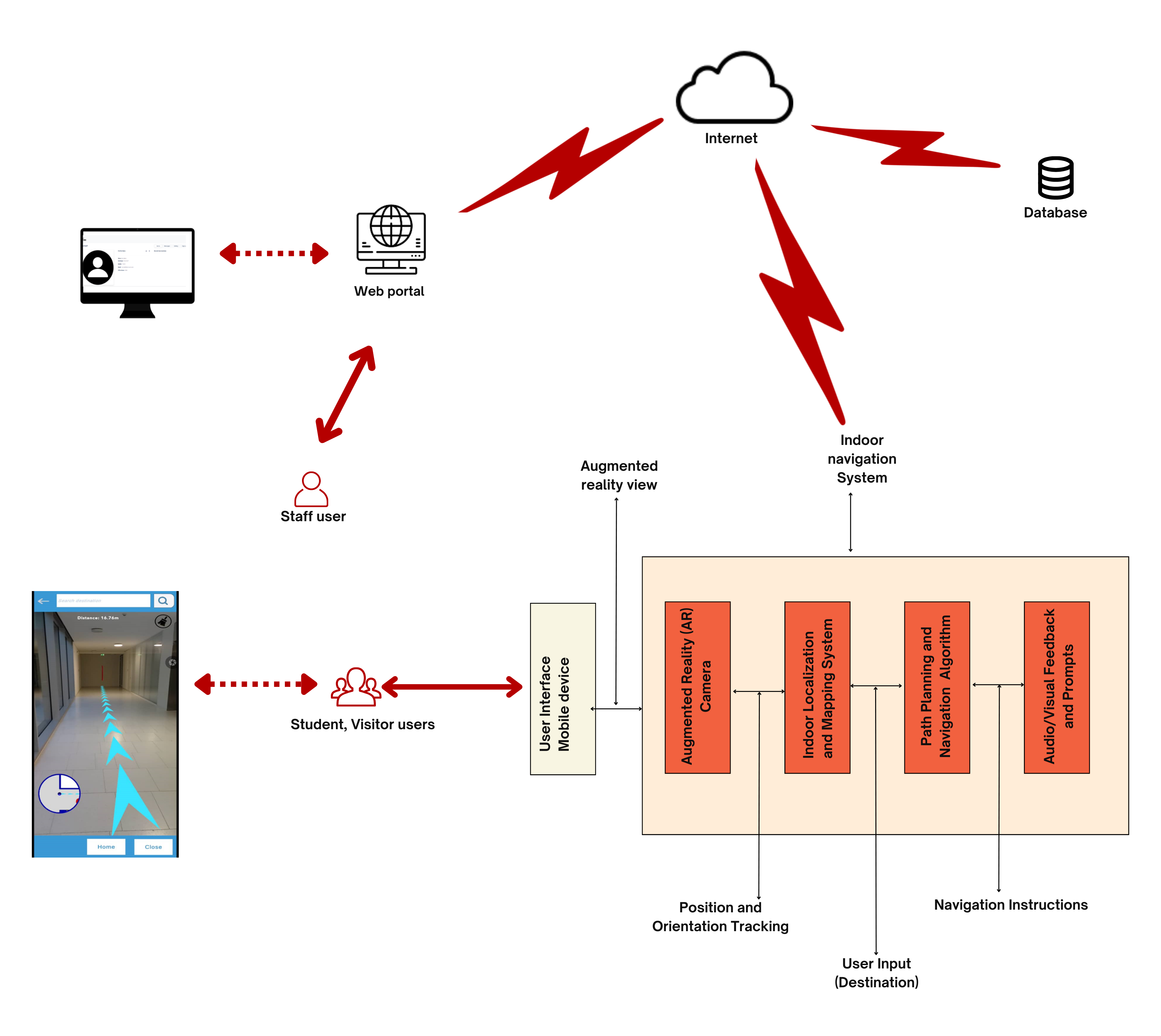Development of an Accessible Augmented Reality tool to enhance Indoor Navigation. A case of higher learning institutions
- March 29, 2024
- Godfrey Naman
- 0

Research Problem
Navigation, an inherent characteristic of human beings, involves moving to fulfill basic needs or services. However, navigating complex indoor environments, especially for newcomers in settings like higher learning institutions, poses challenges. Traditional solutions like posters and notice boards are ineffective, particularly for individuals with disabilities like visual impairment. Although technological advancements have led to tools and applications for navigation, challenges persist, notably with WiFi, RFID, and NFC technologies due to accuracy, cost, and security concerns. Immersive technologies such as virtual reality (VR) and augmented reality (AR) offer promising solutions. Research indicates high familiarity and acknowledgment of the usefulness of VR and AR in enhancing user experience. AR, in particular, overlays visual data onto physical environments, aiding indoor navigation by helping users locate destinations within higher learning settings. However, despite these advancements, creating accessible and user-friendly tools for individuals with visual impairments remains a challenge. This project aims to address this by developing an accessible AR indoor navigation tool tailored for both visually impaired and non-disabled individuals within higher learning institutions, aiming to enhance independence and efficiency in indoor navigation.
Findings
The study revealed a remarkable 100% success rate in efficiently guiding users to their indoor destinations using the tool. Incorporating various localization techniques such as machine learning algorithms, QR codes, and SLAM has significantly bolstered the system’s reliability. Additionally, implementation of voice commands and audio cues features to provide navigation assistance ana accessibility for people with visual impairment. More research has to be conducted to improve and provide more accessibility features for diverse user’s abilities.
Impact
The tool and the system demonstrated a potential in solving indoor navigation challenges in higher learning institutions. The validation of the developed prototype receives a positive feedback and users were able to use the tool for navigating to their destination and able to interact with different feature of the tool including reading status, leaving a message and audio and voice commands for people with visual impairment. Additionally, the tool can be used for different use cases such as airport, malls and any environment with complex building structure.
Research Credits
Funders:
- Cenit@EA, DHBW, AuReLia Labor, Baden Württemberg Stiftung
Research Team:
Frank Samson
Dr. Mussa Ally Dida,
Dr. Judith Leo,
Mr. Godfrey Naman
Industrial Supervisor:
- Prof. Sabine Mobs






 Visit Today : 117
Visit Today : 117 Visit Yesterday : 150
Visit Yesterday : 150 This Month : 815
This Month : 815 This Year : 815
This Year : 815 Total Visit : 22387
Total Visit : 22387